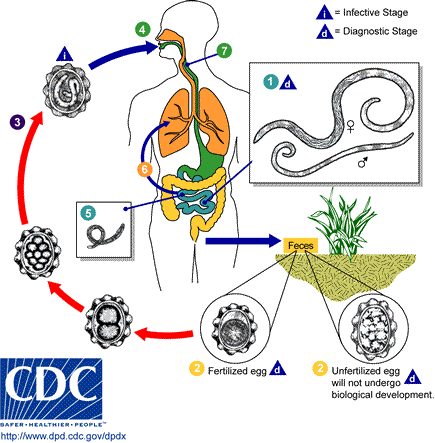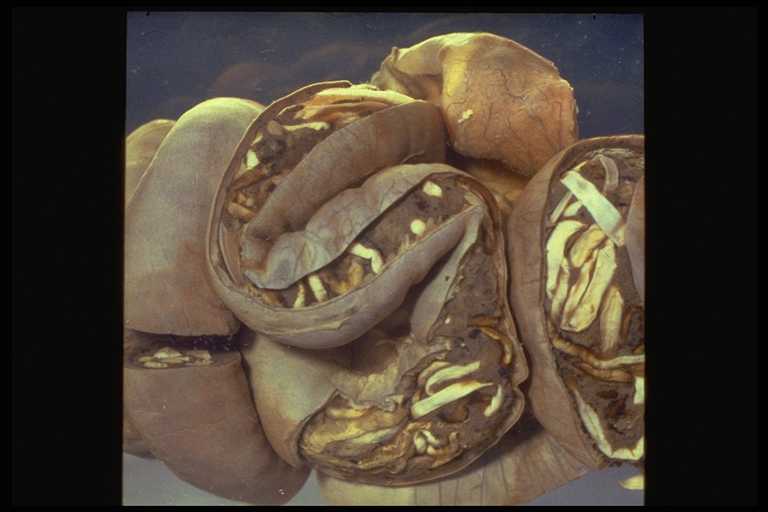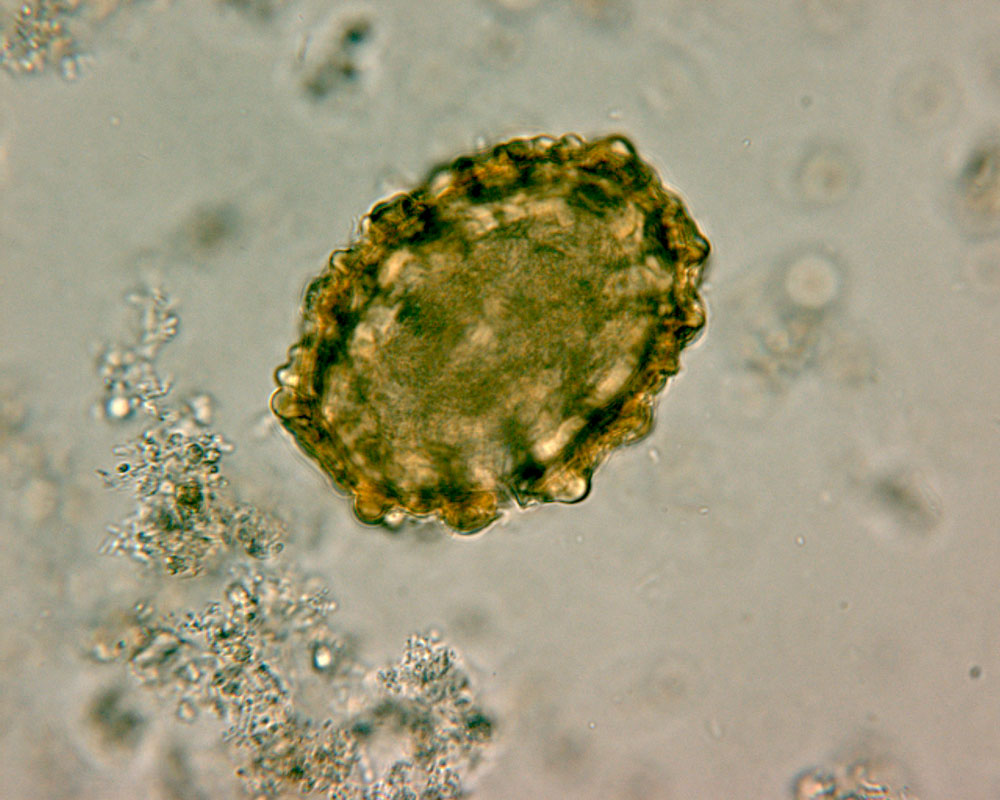Introduction to Diagnostic Medical Parasitology
Essentials
Ascariasis is the most common intestinal nematode infection. It is estimated that approximately 1 billion people are infected worldwide. Many infections are asymptomatic, but in a heavy infection, bowel obstruction may cause death of children.

Infections occur after per oral uptake of embryonated eggs with faecally contaminated uncooked food or soil. Eggs are only infective when they contain a second-stage larva. Therefore no direct person-to-person transmission is possible. This development outside the host takes 2 to 3 weeks and the eggs remain infective for years under optimal conditions. After ingestion of embryonated eggs, larvae hatch in the duodenum and penetrate the mucosa. Via lymphatics and blood, after 2 weeks they reach the lung where they moult and invade alveoli. Larvae ascend the trachea and are swallowed. Adult worms are found in the jejunum approx. 2 months post-infection. Female worms (20 to 40 cm long) produce an average of 200,000 eggs per day!

Epidemiology
- Distribution is worldwide; prevalence is especially high in areas where standards of hygiene and sanitation are low or where human faeces are used as fertilizer
- Prevalence and worm burden are higher in children than in adults
- Ascaris (as other helminths) has an aggregated or negative binomial distribution in a population: this mean that there are many light infections and only few heavy infections
- Per oral infection with embryonated eggs


Pathology
- Pathology depends on the worm burden
- Asymptomatic light infections are frequent
- During the pulmonary phase: in some people there is an inflammatory response, blood eosinophilia and granulomatous reaction around the larvae
- Intestinal phase: serious complications may occur in heavily infected children due to bowel obstruction
Clinical Findings
- Some patients have pulmonary manifestations (Löffler’s syndrome) 1 week after infection.
Symptoms during early stages of infection are:
-
- Eosinophilia caused by larval migration (often during reinfection)
- Wheezing
- Coughing
- Fever
- In intestinal infection, there are no or only light intestinal symptoms


Diagnosis
Diagnostic methods
Parasitological diagnosis
Ova can be easily recovered from faeces of infected individuals. Be aware that fertilized and non-fertilized eggs look different.
Rarely, adult worms may be found in stools.
During the larval migration phase, larvae may be found in the sputum.
Molecular diagnosis
The Helminth Panel is used to investigate the most prevalent helminth infections present in stool samples.
Diagnostic strategies
- Screening populations to assess the prevalence
Perform a cross-sectional study analysing fixed stool specimens with a concentration method (preferably by sedimentation since unfertilized eggs do not float)
- Detecting Ascaris in exposed individuals
Examine fresh stools for ova directly (or after concentration)

Prevention and control
- Community control by education and by latrine programmes
- Individual prophylaxis (hand washing, avoidance of uncooked vegetables where “night soil” is used, boiling drinking water)

